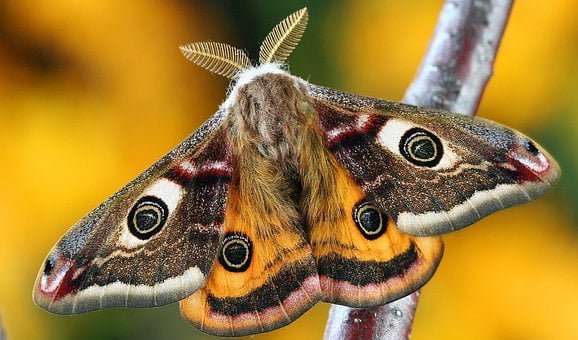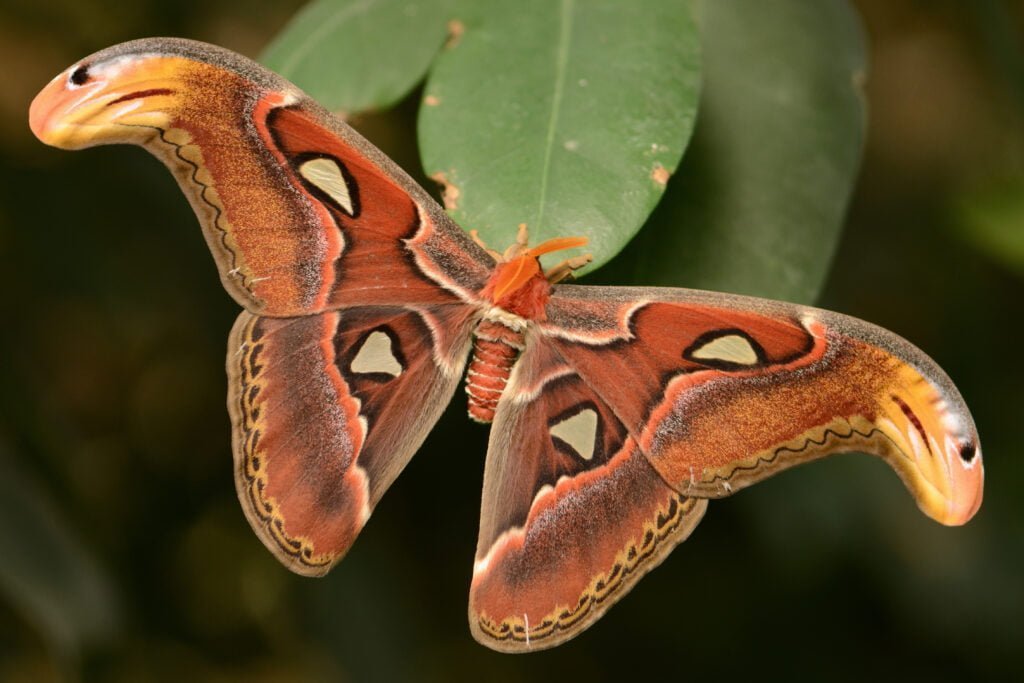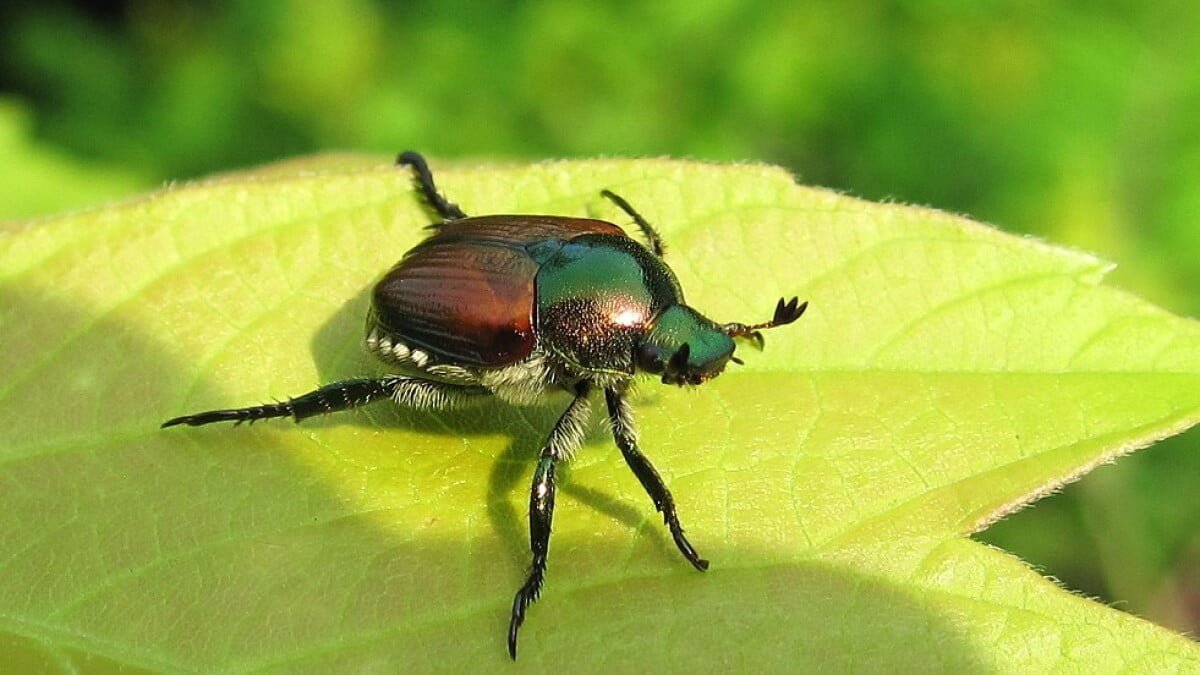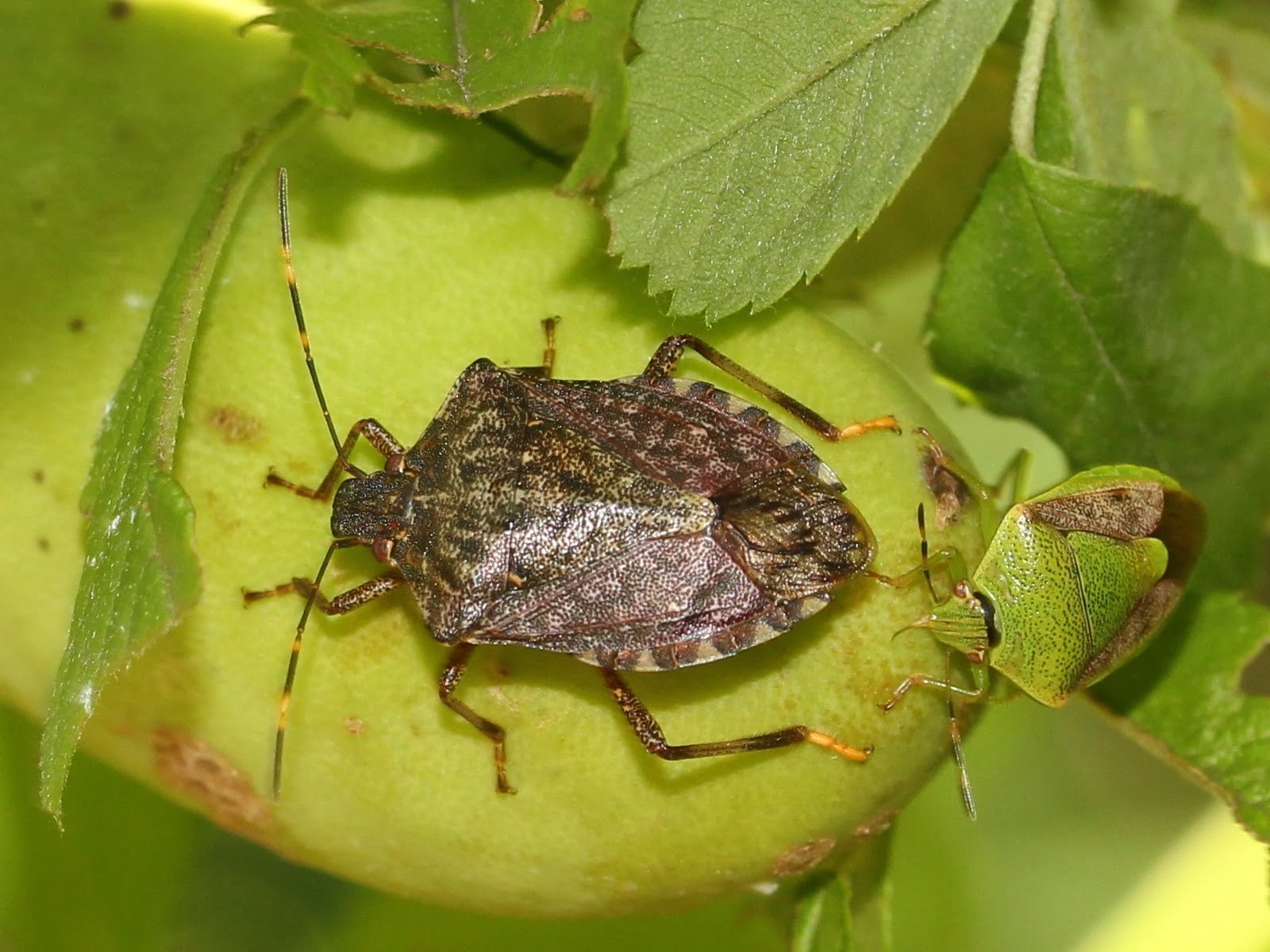Moth insect Facts, FAQs, Behaviour, Habitat, Conservation and more

Moth insect Facts | Description | Distribution and Habitat | Conservation | Behaviour and Ecology | Interaction with Human | Cultural | Interesting facts | frequently asked questions about Moth
These tiny creatures are some of the most diverse and abundant insects on the planet, with over 160,000 species identified to date. From the colorful and flamboyant Atlas Moth to the humble and industrious silkworm, moths play an essential role in our ecosystems and have captivated humans for centuries with their mysterious and enigmatic nature. With their delicate wings and unique life cycles, moths are a testament to the wonder and diversity of the natural world. Join us on a journey to discover the secrets of the Insect Moth and explore the many ways in which these remarkable creatures have influenced our culture, science, and art.
Taxonomy of Moth
| Kingdom | Animalia |
|---|---|
| Phylum | Arthropoda |
| Class | Insecta |
| Order | Lepidoptera |
| Suborder | Glossata |
| Infraorder | Heteroneura |
| Superfamily | Various |
| Family | Various |
| Genus | Various |
| Species | Various |
Note: The taxonomy of Insect Moth is extremely diverse, with numerous families, genera, and species. Therefore, the above table provides a general overview of the taxonomic hierarchy for moths, but it’s not comprehensive.
Morphology of Moth
| Body Part | Description |
|---|---|
| Head | Small, with two large compound eyes, two antennae, and a proboscis for feeding |
| Thorax | Segmented and muscular, with three pairs of legs and two pairs of wings attached |
| Abdomen | Soft and flexible, containing digestive and reproductive organs |
| Wings | Covered in scales and membranous, with intricate patterns and colors |
| Legs | Six legs, each with five segments and ending in claws |
| Antennae | Elongated and segmented, used for sensing chemicals and pheromones in the environment |
| Proboscis | Tubular mouthpart used for feeding on nectar, sap, or other liquids |
Note: The morphology of Insect Moth can vary greatly depending on the species, gender, and life stage. Therefore, the above table provides a general overview of the main body parts and their functions, but it’s not comprehensive.

Description of Moth
Moths are a diverse group of insects that belong to the order Lepidoptera, which also includes butterflies. They have a unique and fascinating morphology, with delicate wings covered in tiny scales and a long, flexible body that can range from a few millimeters to several centimeters in length. The colors and patterns on their wings can be striking and varied, ranging from muted browns and grays to bold yellows, greens, and purples.
Moths have two large compound eyes that can detect light and movement, as well as two elongated antennae that can pick up chemical signals in the air. Their proboscis, a tubular mouthpart, is used for feeding on nectar, sap, or other liquids. Moths also have six legs, each with five segments and ending in claws, that enable them to cling to surfaces and move around.
Moths can be found in a wide range of habitats, from forests and meadows to deserts and urban areas. They are mostly nocturnal, with many species flying at night and resting during the day. Some species, however, are active during the day and have evolved bright colors and patterns to deter predators.
Moths play an important role in many ecosystems as pollinators, food sources for other animals, and decomposers. Some species are also of economic importance, such as the silkworm moth, which is used for silk production, and the wax moth, which feeds on beeswax and can damage beehives. Overall, moths are a fascinating and diverse group of insects that have captivated humans for centuries with their beauty and mystery.
Distribution and habitat of Moth
Moths are a highly diverse group of insects that can be found all around the world, except for the coldest polar regions. There are over 160,000 known species of moths, and they occupy a wide range of habitats, from tropical rainforests to arid deserts and everything in between. Some moths are adapted to live in specific habitats, while others are more generalist and can thrive in a variety of environments.
Moths can be found in diverse habitats such as forests, grasslands, wetlands, mountains, and even urban areas. They can live in trees, bushes, and other plants, as well as in soil, caves, and crevices. Some species are adapted to live in aquatic environments, such as the caddisflies, which are a type of moth larva that live underwater.
Most moth species are nocturnal and prefer to be active at night, but some are active during the day. Many moth species rely on camouflage to blend in with their environment and avoid predators, while others have evolved bright colors and patterns to deter predators.
Overall, the distribution and habitat of moths are incredibly diverse, and they play a crucial role in many ecosystems as pollinators, food sources for other animals, and decomposers.
Behaviour and Ecology of Moth
Moths exhibit a wide range of behaviors and ecological roles, depending on their species and habitat. Some of the most notable behaviors and ecological roles of moths include:
- Pollination: Many moth species are important pollinators, particularly of night-blooming plants. They have specialized mouthparts that allow them to sip nectar from flowers, and they transfer pollen as they move from flower to flower.
- Defense mechanisms: Moths have evolved a range of defense mechanisms to protect themselves from predators. Some species have evolved to mimic the appearance of other insects or objects in their environment, while others have developed warning colors or toxic chemicals to deter predators.
- Mating and reproduction: Moths have complex mating behaviors that can involve pheromones, visual cues, and physical interactions. Some species of moths also lay their eggs on specific host plants, where the larvae will feed and develop.
- Migration: Some species of moths exhibit impressive migratory behaviors, traveling long distances to reach their breeding or feeding grounds. For example, the monarch moth is known for its annual migration from Canada to Mexico.
- Role in food webs: Moths are an important food source for many animals, including birds, bats, and small mammals. They also play a crucial role in decomposition by breaking down organic matter.
Overall, moths are a diverse and ecologically important group of insects that exhibit a range of fascinating behaviors and interactions within their environments.
Conservation of Moth
Moths, like many other insects, play important ecological roles and are crucial to maintaining biodiversity. Conservation and cultivation of moth populations are therefore essential for preserving ecosystem functioning and maintaining healthy ecosystems. Here are some ways in which moths can be conserved and cultivated:
- Habitat conservation: Preserving and restoring natural habitats is crucial for maintaining healthy moth populations. Habitat loss and fragmentation are major threats to many moth species, so conservation efforts should focus on protecting and restoring their habitats.
- Pesticide reduction: Pesticides, particularly insecticides, can have negative impacts on moth populations by reducing their food sources and altering their behavior. Reducing pesticide use and implementing alternative pest control strategies can help to protect moth populations.
- Education and awareness: Educating the public about the importance of moths and their conservation needs can help to garner support for conservation efforts. Raising awareness about the ecological roles of moths and the threats they face can also encourage individuals to take actions that support moth conservation.
- Monitoring and research: Monitoring moth populations and studying their ecology can help to identify threats and develop effective conservation strategies. Ongoing research is essential for understanding the complex interactions between moths and their environments, and for developing targeted conservation interventions.
- Cultivation and rearing: Some moth species, such as the silk moth, have economic importance and are cultivated for their products. Cultivating and rearing these species in a sustainable and ethical manner can help to support local economies while also conserving moth populations.
Overall, conservation and cultivation of moth populations are essential for maintaining healthy ecosystems and preserving biodiversity. By protecting and supporting moth populations, we can ensure the continued provision of important ecosystem services and promote the long-term health of our planet.
Interaction with Human of Moth
Moths interact with humans in a variety of ways, both positive and negative. Here are some examples of how moths interact with humans:
- Economic importance: Some species of moths have significant economic importance. For example, silk moths are cultivated for their silk, which is used to make textiles and other products. Other species of moths are important pollinators of crops, contributing to agricultural production.
- Pest control: While many moth species are beneficial, some can be considered pests. For example, clothes moths can cause damage to wool and other fabrics, while pantry moths can infest stored food products. In some cases, moth populations may need to be managed to prevent economic losses or health risks.
- Inspiration for art and culture: Moths have long been a source of inspiration for art and culture. Their intricate patterns and colors have been incorporated into textiles, jewelry, and other decorative objects. They have also been featured in literature, poetry, and other forms of artistic expression.
- Citizen science: Moths are often studied by citizen scientists, who use techniques such as moth trapping and identification to monitor populations and contribute to scientific research. This type of citizen science can help to increase public awareness of moth ecology and conservation needs.
- Ecotourism: In some areas, moths are a popular attraction for ecotourists. Guided tours and other activities centered around moth watching can provide economic benefits to local communities while also promoting conservation awareness.
Overall, moths have a complex and varied relationship with humans. While some species may be considered pests, many others are important contributors to ecological and economic systems. By studying and understanding the role of moths in our ecosystems, we can better manage and conserve these fascinating insects for future generations.
Cultural and Historical Significance of Moth
Moths have been a part of human culture and history for thousands of years. Here are some examples of their cultural and historical significance:
- Mythology and folklore: Moths have been featured in the mythology and folklore of many cultures around the world. In some cultures, they are associated with death and the afterlife, while in others, they are seen as symbols of transformation and rebirth.
- Art and literature: Moths have long been a source of inspiration for artists and writers. Their intricate patterns and colors have been incorporated into textiles, paintings, and other forms of art. They have also been featured in literature, poetry, and other forms of creative expression.
- Scientific research: Moths have been studied by scientists for centuries, and their life cycles, behavior, and ecology have provided important insights into the workings of ecosystems. Some of the earliest studies of moth behavior were conducted by the naturalist Jean-Henri Fabre in the late 19th and early 20th centuries.
- Silk production: Moths of the genus Bombyx, commonly known as silk moths, have been cultivated for their silk for thousands of years. Silk production was once a highly valued industry, and the silk trade played an important role in the development of trade routes and the exchange of ideas and culture between different regions.
- Conservation efforts: In recent years, moths have become an important focus of conservation efforts. Some species of moths are threatened by habitat loss, pollution, and other human activities, and conservation efforts are aimed at protecting these species and their habitats.
Overall, moths have played a significant role in human culture and history, from their use in silk production to their place in mythology and folklore. As we continue to study and understand these fascinating insects, we can appreciate their cultural and historical significance and work to conserve them for future generations.
Explanatory Notes for Moth
- Explanatory notes for moth can refer to additional information or definitions of terms related to this insect. Here are some possible explanatory notes for moth:
- Nocturnal insect: Moths are primarily nocturnal insects, meaning they are active at night. This is in contrast to butterflies, which are diurnal and active during the daytime.
- Pheromones: Female moths release pheromones, which are chemical signals that attract males for mating. Male moths have highly sensitive antennae that can detect these pheromones from a distance.
- Mimicry: Some species of moths have evolved to mimic the appearance of other insects, such as bees or wasps. This is thought to provide protection from predators, as many predators avoid stinging insects.
- Cocoon: After the larval stage, many species of moths spin a cocoon in which they undergo metamorphosis into their adult form. The cocoon is made of silk produced by the larva, and provides protection during this vulnerable stage of development.
- Scales: The wings of moths are covered in tiny scales, which give them their distinctive patterns and colors. These scales are easily dislodged and can create a powdery residue on surfaces where moths land.
- Host plants: Many species of moth larvae are specific to certain host plants, meaning they only feed on one or a few types of plants. This has important implications for their ecology and conservation, as changes in host plant availability can have a significant impact on moth populations.
- Overall, explanatory notes for moth can provide additional context and details about the biology, behavior, and ecology of these insects. By understanding the unique characteristics and adaptations of moths, we can appreciate their diversity and importance in our ecosystems.
Interesting facts about Moth
- Moths are more diverse than butterflies: There are over 160,000 species of moths, which is more than double the number of butterfly species.
- Some moths are active during the day: While most moths are nocturnal, some species are active during the daytime, such as the hummingbird hawk-moth.
- Moths can fly long distances: Some species of moths are capable of migrating long distances, covering thousands of miles in search of food and breeding grounds.
- Moths have an excellent sense of smell: Male moths can detect the pheromones released by female moths from a distance of several miles.
- Moths are important pollinators: Some species of moths, such as the hawk-moths, are important pollinators of flowers, especially those that bloom at night.
- Silk is produced by moth larvae: The silk that is used to make textiles is produced by the larvae of certain moth species, such as the domestic silk moth.
- Moths can vary greatly in size: The smallest moths are less than one millimeter in length, while the largest moths, such as the Atlas moth, can have a wingspan of over 25 centimeters.
- Some moths have transparent wings: The wings of some species of moths, such as the clearwing moths, are partially or completely transparent.
- Moths can make ultrasonic sounds: Some species of moths, such as the tiger moths, can produce ultrasonic sounds to communicate with each other.
- Moths have inspired art and literature: Moths have been featured in art and literature for centuries, from the intricate patterns on their wings to their role in mythology and folklore.
- Overall, moths are a fascinating and diverse group of insects, with many unique adaptations and behaviors that have captured the attention of humans for centuries.
General queries or frequently asked questions about Moth
What is the difference between a moth and a butterfly?
Moths and butterflies belong to the same order of insects (Lepidoptera), but there are some key differences between the two. Moths are generally nocturnal, while butterflies are diurnal. Moths also tend to have plumper bodies and broader wings than butterflies, and their antennae are usually feathery or comb-like, while butterfly antennae are typically thin and pointed.
What do moths eat?
The diet of moths varies depending on the species and life stage. Adult moths usually do not eat at all, as their primary function is to reproduce. However, moth larvae (caterpillars) can feed on a wide range of plant materials, including leaves, stems, flowers, and seeds.
Are moths harmful to humans?
Most species of moths are harmless to humans, and some are even beneficial as pollinators or as a food source for other animals. However, some moth larvae can damage crops or textiles, and a few species of moths can cause allergic reactions in some people.
What is the lifespan of a moth?
The lifespan of a moth varies depending on the species and the environmental conditions. Some species may only live for a few days, while others can live for several months. The adult stage of most moth species is relatively short-lived, as their primary purpose is to mate and reproduce.
Why are moths attracted to light?
The exact reason why moths are attracted to light is not fully understood, but there are several theories. One theory is that moths use the moon as a navigational reference point, and they become confused when they encounter artificial lights that are brighter and closer. Another theory is that moths are attracted to the ultraviolet light that is emitted by some types of light bulbs.
How can I prevent moths from damaging my clothes?
To prevent moth damage to clothing, it is important to keep clothes clean and stored in airtight containers. Moths are attracted to soiled fabric and may lay eggs on dirty clothes. Cedar wood, lavender, and other natural repellents can also help deter moths.
Do moths have predators?
Yes, moths have a variety of natural predators, including birds, bats, spiders, and other insects. Some species of moths have evolved camouflage or mimicry to help them avoid being detected by predators.
Can moths be kept as pets?
Some people do keep moths as pets, although this is not common. It is important to ensure that the moth species is legal to keep as a pet, and that appropriate care is provided, including proper housing and diet.
Why are some moths important for conservation?
Some species of moths are important for conservation because they serve as pollinators or as food sources for other animals. Moths also play important roles in ecosystems as decomposers and in nutrient cycling. Additionally, some moth species are indicator species, meaning they can help scientists monitor changes in the environment.
Conclusion
In conclusion, moths are fascinating insects that play important roles in the natural world. With over 160,000 species, they are incredibly diverse in terms of their morphology, behavior, and ecology. Moths are found all over the world and occupy a wide range of habitats, from tropical rainforests to arctic tundras.
While some moth species can be harmful to crops or textiles, most are harmless and even beneficial to humans as pollinators or as a food source for other animals. Moths have also played important roles in human culture and history, inspiring works of art and serving as symbols of transformation and metamorphosis.
However, like many other species, some moth species are facing threats such as habitat loss, climate change, and pesticide use. Conservation efforts are needed to protect these important insects and the ecosystems they inhabit.
Overall, moths are a vital part of the natural world and are deserving of our respect and admiration.












